17. How to Take Photos 12: Nature Photography 2: Telephoto
Notes from this lesson come from Simon d'Entremont.
Photographing Wild Animals
1. You need to be quiet. Wild animals are fearful, and run from loud noises. You need to creep up on them quietly, and maybe you'll see them before they see you and run off.
2. Open your ears. Students ask me, how did I get this photo of foxes?
It's simple. I listened for them. Many animals communicate with each other. Foxes will bark, yip, and yowl at each other - it sounds higher in pitch than a dog, a bit cat-like. If you take out your ear phones and just listen to the world around you, finding these animals is as simple as hearing them, and walking toward them.
3. Set your camera to rapid fire. To shoot a long rapid burst of photos, you need the fastest SD card possible - note it's not just a question of how fast it can read data, but how fast it can write data. Most cheaper cameras will bog down with buffering and stutter when you hold the rapid shutter release too long. Get used to pressing for short bursts with pauses to give your digital camera processer a chance to catch up.
4. Don't use Aperture Mode! For clear, crisp photos, you need a fast shutter speed, especially with a telephoto lens - the higher the mm, the faster you need the shot to be. Better is to use Manual Mode (or Shutter Speed Mode) and manually set your ISO high enough to get a good shot (take a practice shot of each scene and check the exposure). You'll generally want the widest Aperture (lowest F number) possible. The problem with Aperture Mode is, the camera doesn't know it's got a telephoto lens on it, it doesn't know it's not on a tripod, it doesn't know you'd rather raise the ISO than slow the shutter speed. It'll take shots as slow as a tenth of a second, blurring everything, no matter how steady your hand - even on a tripod, it could end up blurry at such slow speeds.
5. Wind direction matters, especially if you're going to hide in one spot and wait. You want to stand downwind or sidewind of any animals you wish to photograph. That way they're less likely to smell or hear you - wind also carries sound, not just smell.
There are simple ways to find wind direction anywhere. In heavy wind, it's obvious. In light wind, you can lick your finger and stick it in the air. Turn your finger slowly, and where it's coldest, that's where the wind is coming from.
6. If you're going to sit and hide somewhere, you may consider a ghillie suit:
I know a photographer who wears them, and wild animals will walk right up to his camera.
7. Some animals are more common than others, but don't neglect the common ones. You can still make a masterpiece, using them as a subject. Think of it as practice. Nature photography requires lots of practice.
8. Crouch. Get down to an animal's eye level. It helps for several reasons. It helps you capture the animal's expression, it's more intimate, and it puts distance between it and the background, so the background looks blurred and therefore "cleaner".
9. Animals can be quite expressive - even with the tilt of a head.
Try to find and capture that as much as possible - personify them. Take tons of photos, and see if you don't find some surprising expressions. And with that, your photos will begin to tell a story. This can be most powerful when animals open their mouths, as if speaking.
10. Simon d'Entremont recommends taking photos in either the best light - the Golden Hours, or in the worst weather conditions, to help your photos stand out in a crowd. Rain, snow, wind, and fog can help describe the animals' lives, and enhance their beauty. Also note that animals are typically most active during the Golden Hours (the hour after sunrise and the hour before sunset).
11. Simon d'Entremont also recommends looking for shots that are either backlit or sidelit. This works best when your subject is in direct sunlight, and the background is dark and "clean", meaning it's not too busy. This kind of light works best with animals that are fluffy and furry, as it makes the best "rim light" on that kind of texture.
Photographing Birds
1. Wind direction matters. Any birds that sit in open water will naturally point their bodies and heads to the wind. Larger, heavier birds like geese and herons need room, like a runway, to take off and land. When they take flight, they always fly into the wind, so you need to be standing upwind of them. That way, they're flying towards you, not away. And, if it's a flocking bird like duck or geese, they may all take off at once. They may land towards you as well.
2. For birds in trees, if you want to get any detail, you need a 600mm lens. They're expensive, but the difference is enormous. Birds are so small, and most trees are so tall, a 300mm lens gives you this:
Compare with a 600mm lens:
3. Just as macro nature photography has levels of difficulty, so it is with birds. Getting a shot of a bird foraging on the ground is easiest (1st Level). They're preoccupied, and won't move all that much. Getting on their level, or getting them to look at you, is more of a challenge. You'd have to lay on the ground for that (good idea!)
2nd Level is getting a shot of a bird in a tree. Most birds perch only for a moment before flying to the next branch, so you have less time - it's like playing tag. There can also be other branches in the way that make it hard to focus on the bird.
3rd Level is getting a good shot of the bird mid-flight. Larger birds are a bit easier:
Songbirds are so fast, their reflexes so sharp, there's little chance you'll get the shot in time - especially if you zoom in too close - I've tried:
The hardest bird photo you can take (Level 4) is of two birds interacting with one another mid-flight. I've seen photos like that, but I haven't managed to take one yet. If you want to get a shot of birds in flight, the easiest way is to wait near a bird feeder - but many people consider it cheating. It's not really a "wildlife" photo. Another way is to find a bird that's perched somewhere, and simply stare at it - through your camera. Wait, ever patiently, for it to take flight, and be ready, with your finger on the shutter release. Make sure you're zoomed out far enough that you'll catch it before it flies too far out of the frame:
4. For larger birds, you can still get a good shot of them flying far away, but it helps to stand in a large clearing, so no trees block your view. Plan out a clearing where you can see large birds of prey circling overhead. The more they circle back, the more chances you have to capture a good photo.
5. Again, use your ears to listen for birds that are nearby. A fun challenge can be learning the different sounds and calls, so you can recognize when you hear a rare one. It's difficult because each bird sings more than one song, and many bird species sing similar songs. Let's go over some common and less common birds (I teach in Northern Virginia, so I'll be referring to the wildlife here).
Songbirds (in order of rarity - photos taken by me):
American Robin
Habitat: These birds can be found in the woods and in suburban areas. They like to forage on people's lawns.
Song: These have a trilly, high-pitched song, with a clear, whistly voice. They usually divide notes up into triplets. It's a bit random, you may hear something like, "Cheerup! Cheerup! Cheerily!" Sometimes I hear, "Where am I? Here I am! Where am I? Here I am! Where are you? Over here!"
Crow
Habitat: These scavengers like to nest in the woods. They also cruise around outdoor restaurants, roadsides, and any open trashcan they can pilfer.
Song: Everyone knows the familiar, "Caw! Caw! Caw!"
House Sparrow
Habitat: commonly found in groups, in forests and suburban areas.
Song: These sing simple little chipping notes - "Chip! Chip!"
Song Sparrow
Habitat: The woods
Song: These sing, "Maids! Maids! Put oooon your tea kettle! eddle! eddle!" I also hear, "Tweet, Tweedledeeee! Ta-hee hu-hu-hu-hu-hu-hu-hu!!"
White-Throated Sparrow
Habitat: forests
Song: These sing, "Ohhh Sweet Ca-nada! Ca-nada! Ca-nada! Ohhh Sweet! Sweet! Sweet! Sweet!"
Northern Cardinal
Habitat: These tree-loving birds can be found in woods and suburban areas. They are the state bird of Virginia.
Song: These have a rich, clean singing voice, if slightly nasal. "Cheeer! Cheeer! Cheeer! Pip! Pip-ip-ip-ip-ip! Purdie? Birdie? Purdie? Birdy? Come here! Come here! Whaaaaat??? Oh, never, nyever, nyever, nyever!"
Mourning Dove
Habitat: Commonly found in the woods and sitting on power lines.
Song: With a voice like a pigeon, these birds sing a slow, mournful, "Whoooooo-Wee! who, who, who!" Some people confuse them for owls because of their song.
European Starling
Habitat: These birds are often foraging on the ground, especially around DC.
Song: They sing a scratchy, "Squee!!" and make clicking noises like Morse code.
Downy Woodpecker
Habitat: In the woods and in suburban areas, they're quite common.
Song: You'll hear them drilling in wood. They have a trilling song, similar to how they drill, and they sing, "Pick! Pick! Pick! pi-i-i-i-i-i-i-i-i-i-i-i-i-i-i-i-i!!!" It can sound like a wild laughing cackle - almost like a monkey.
Blue Jay
Habitat: The woods and suburban areas. These birds like to forage along the ground.
Song: These birds have a raspier voice. They often sing a vulgar, "Jay! Jay! Jay!" They also make "Click" sounds, and sing a high pitched, "Glaw, Glaw! Glaw, Glaw!" almost like crows.
House Finch
Habitat: Woods and suburban areas.
Song: These birds have a raspy voice and, like all finches, sing a variety of songs - usually in a specific sequence, "Hello? He-hello?" "Zurry!" and lots of trilling.
Northern Mockingbird
Habitat: Suburban areas and forests.
Song: These birds sing a combination of other birds' songs - to trick them into leaving their nests, so she can steal it.
Black-Capped Chickadee
Carolina Chickadee
Song: These sing in much the same way as the "Black Capped" variety - they both have black caps, but Carolina chickadees have light gray bellies, whereas the Black Capped chickadees have an orangish, cream-colored belly.
Common Grackle
Identifying: like smaller, slimmer crows, they're most distinguishable by their iridescent blue heads. Juvenile grackles can appear completely black, making them hard to identify.
Habitat: Similar to crows - anywhere they can get a meal. They also tend to fly in packs.
Song: These birds sing a strange combination of clacks and whistles.
Red-winged Blackbird
Habitat: One of the few birds that absolutely love marshland. They're quite common in any marsh, but quite hard to find outside of one.
Song: These sing a loud and distinctive, "Conquer-ri-i-i-i-i-i-i-i-i!!!" (trilling). You'll hear it before you see them.
American Goldfinch
Habitat: The woods and suburban areas.
Song: These sing a variety of songs, like all finches, sometimes repeating, "Potato chip chip chip chip!"
Tufted Titmouse
Habitat: Forests and suburban areas.
Song: These sing a scratchy, high-pitched, "Caw-haw-haw-haw!" Also, in a clearer voice, like a cardinal, "Peter! Peter! Peter!"
Red-Bellied Woodpecker
Habitat: Tall trees, in the woods and suburban areas.
Song: These sing, a short, high-pitched, trilly squak, or, "Chur, chur!" It can sound a bit like lasers.
Gray Catbird
Habitat: In the woods and suburban areas.
Song: Meow! Meow! also sings a variety of melodic, trilly songs, like a mockingbird
Brown-Headed Cowbird
Habitat: These migratory birds come in large flocks, and can be seen for short amounts of time before flying off on their journey. They lay eggs in other birds' nests, leaving offspring to be cared for by other bird species.
Song: These birds sing a gurgling, "gurk, gurgle, skree-e-e-e-e-e-e!!!" almost as if with a mouthful of water.
White-Breasted Nuthatch
Habitat: Woods and suburban areas.
Song: These birds sing a muted, mechanical laugh, similar to the downy woodpecker, like "hahahahahahahaha" or "an-an-an-an-an-an-an!!" They also give a little, high pitched, raspy, "Caw," like a blue jay.
Pileated Woodpecker
These birds, the largest woodpeckers in north America, sing a loud, fast, clownish high-pitched laugh. It almost sounds like a monkey.
Eastern Bluebird
Habitat: Forests, although I haven't yet seen one in Virginia. This photo I took in Massachusetts.
Song: high-pitched trills, similar to a Robin's. "Cheer, cheerful charmer!"
Eastern Phoebe
Habitat: Forests.
Song: "Phoebe! Phoebe! Phoebe!" Funny enough, it can be hard to distinguish their song from the Chickadee's "Cheeseburger!"
Northern Flicker
Habitat: Tall trees, in the woods and suburban areas.
Song: for territory: laughing ha-ha-ha-ha-ha! also: meah! meah!
Ruby-throated Hummingbird
Habitat: The woods and suburban areas. I haven't been able to get a photo yet - they're so fast!
Song:
White-Crowned Sparrow
Habitat: ? Haven't seen one yet.
Song: These birds sing a jumbled whistle, ending with trill, "Eeeee! Warble! Trill!"
Chipping Sparrow
Habitat: ? Haven't seen one yet.
Song: These birds sing a fast, mechanical, high-pitched: "Tweet-tweet-tweet-tweet-tweet!"
Hairy Woodpecker
Identifying: These birds look nearly identical to the downy variety, but have longer beaks.
Habitat: Not sure I've seen one yet.
Song: Their voice is sharper than the downy variety, singing "Peak! squeak! squeak!"
Baltimore Oriole
Habitat: ? Haven't seen one yet.
Song: These sing "Here! Here! Come right here! Dear! Up! Down!"
Hooded Warbler
Habitat: ? Haven't seen one yet.
Song:
Blackburnian Warbler
Habitat: ? Haven't seen one yet.
Song:
Golden-Winged Warbler
Habitat: ? Haven't seen one yet.
Song:
Palm Warbler
Habitat: ? Haven't seen one yet.
Song:
Ruby-Crowned Kinglet
Habitat: ? Haven't seen one yet.
Song: sings a variety of songs, similar to a mockingbird, voice ranges from raspy to clear like a cardinal. "tweet! tweet! gurdy-twerty! tweet tweet tweet!
Golden-Crowned Kinglet
Habitat: ? Haven't seen one yet.
Song: See-see-see!
Barn Swallow
Habitat: ? Haven't seen one yet.
Song:
Tree Swallow
Habitat: ? Haven't seen one yet.
Song: little trilly chirps
House Wren
Habitat: ? Haven't seen one yet.
Song: trilly, high, gurgly pictched: ch-ch-ch-bl-wur-wury-wury!
Carolina Wren
Habitat: ? Haven't seen one yet.
Song: trilly high-pitched, that sounds a great deal like a cardinal: twi-hyoo, twi-hyoo! twi! tea-kettle! cheer! cheer!
Marsh Wren
Habitat: ? Haven't seen one yet.
Song: chirp! ha-a-a-a-a-a-a-a-a! trillllllllll
Winter Wren
Habitat: ? Haven't seen one yet.
Song: very high pitched: cheep-cheep! cheep-cheep! pip-squeak!
Red-Breasted Nuthatch
Habitat: ? Haven't seen one yet.
Song: like he's laughing, ank! ank! ank! ank!
Great Crested Flycatcher
Habitat: ? Haven't seen one yet.
Song: sings a raspy, vulgar, "Cheep! weep! weep!"
Smallest Eastern Flycatcher
Habitat: ? Haven't seen one yet.
Song:
Ash-Throated Flycatcher
Habitat: ? Haven't seen one yet.
Song:
Kingbird
Habitat: ? Haven't seen one yet.
Song:
Belted Kingfisher
Habitat: ? Haven't seen one yet.
Song: sounds like a children's toy that you spin around to make a funny sound.
Common Yellowthroat
Habitat: ? Haven't seen one yet.
Song: high-pitched and questioning: Whichidee! whichidee! whichidee! whichidee!
Evening Grosbeak
Habitat: ? Haven't seen one yet.
Song:
Red/rose-Breasted Grosbeak
Habitat: ? Haven't seen one yet.
Song: trilly, "Cheerup! Cheerily! Cherio! Chink! Chink!"
Indigo Bunting
Habitat: ? Haven't seen one yet.
Song: Fire! Fire! Where? Where? Here! Here!
Eastern Towhee
Habitat: ? Haven't seen one yet.
Song: Drink Your Tea! Tea! Tea! Tea! Tea! Tea!
Dark-eyed Junco
Habitat: ? Haven't seen one yet.
Song: lots of different calls, but high pitched trill-trill-trill-trill-trill! also: do!-do!-do!-do!-do!-do!
Cedar Waxwing
Habitat: ? Haven't seen one yet.
Song: tree! tweet! tweet!
Pine Siskin
Habitat: ? Haven't seen one yet.
Song:
Blue-gray gnatcatcher
Habitat: ? Haven't seen one yet.
Song: chee! chee! chee! chee! chee! ch!!!!!!!
Eastern Meadowlark
Habitat: ? Haven't seen one yet.
Song: very high pitched: But I do love you!
Scarlet Tanager
Habitat: ? Haven't seen one yet.
Song: Hurry! Worry! Blurry! sounds similar to Robin, trilly
Boat-tailed Grackle
Habitat: ? Haven't seen one yet.
Song:
Hermit Thrush
Habitat: ? Haven't seen one yet.
Song: sings a raspy "jay! jay!" like a blue jay. Also, a high whistly, "Why don't you come to me? Here I am, right near you
Brown Thrasher
Habitat: ? Haven't seen one yet.
Song: similar to mockingbird, trilly high-pitched, also sings drop it! drop it! pick it up!
Common Redpoll
Habitat: ? Haven't seen one yet.
Song:
Yellow-Rumped Warbler
Habitat: Tall trees, in the woods and suburban areas.
Song: tweet! tweet! tweet! twi-twi-twi-twi-twi!
Chimney Swifts
Habitat: Tall trees, in the woods and suburban areas.
Song: Pew! Pew! Pew! like lasers.
Salt-marsh Sparrow (rare)
Habitat: ? Haven't seen one yet.
Song:
Nelson's Sparrow (rare)
Habitat: ? Haven't seen one yet.
Song:
Purple Finch (rare)
Habitat: ? Haven't seen one yet.
Song:
Loggerhead Shrike (rare)
Habitat: ? Haven't seen one yet.
Song:
Red-Cockaded Woodpecker (rare)
Habitat: Tall trees, in the woods and suburban areas.
Song:
Waterfowl
Canada Geese
Habitat: Found in all sorts of watery areas - lakes, rivers, marshland.
Song: Honk! Honk!
Mallard Ducks
Habitat: Found in all sorts of watery areas - lakes, rivers, marshland.
Song: Quack! Quack!
Wood Ducks
Habitat: Found in all sorts of watery areas - lakes, rivers, marshland.
Song: Not sure - they seem pretty quiet.
Red Breasted Merganser
Habitat: Found in all sorts of watery areas - lakes, rivers, marshland.
Song: Not sure - they seem pretty quiet.
Great Blue Heron
Habitat: Found in all sorts of watery areas - lakes, rivers, marshland.
Song: Not sure - they seem pretty quiet.
Cormorants
Habitat: Most watery areas - lakes, rivers, harbors. These birds swim just as well as they fly
Song:
Brown Pelican (rare)
Habitat: ?
Song:
Curlew Sandpiper (endangered)
Habitat: ?
Song:
Pipe Plover (endangered)
Habitat: ?
Song:
Birds of Prey
Turkey Vulture
Habitat: Most commonly found along roadsides (flying in circles above road kill) and landfills. These are common throughout the US.
Song:
Black Vulture
Habitat: ? I was lucky enough to take this photo in Gilroy, California.
Song:
Barred Owl
Habitat: Forests.
Song: "Who Cooks For You! Who Cooks For You All!"
Grey Horned Owl
Habitat: ? I haven't seen one yet.
Song: "Whoo! Whoo! Who-Whoo!"
Snowy Owl
Habitat: ? I haven't seen one yet.
Song:
Short-eared Owl
Habitat: ? I haven't seen one yet.
Song:
Eastern Screech Owl
Habitat: ? I haven't seen one yet. These are the most common owls in Virginia, but they are masters of disguise
Song:
Red-Shouldered Hawk
Habitat: Forest.
Song:
Merlin
Habitat: ?
Song:
Peregrine Falcon
Habitat: ?
Song:
Northeren Goshawk
Habitat: ?
Song:
Vireos
Habitat: ?
Song:
American Redstart
Habitat: ?
Song:
American Bald Eagle
Habitat: ?
Song:
Northern saw-whet owl (rare)
Habitat: ? I haven't seen one yet.
Song:
Golden Eagle (rare)
Habitat: ? I haven't seen one yet.
Song:
Black-necked Stilt (rare)
Habitat: ? I haven't seen one yet.
Song:
Ruff (endangered)
Habitat: ? I haven't seen one yet.
Song:
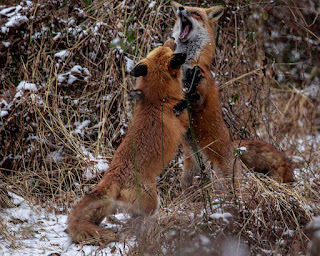

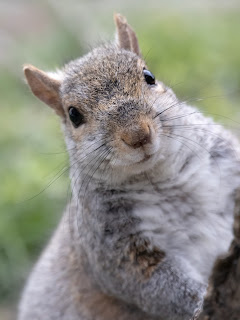








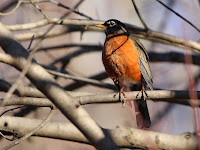

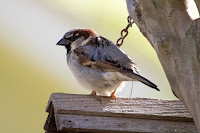































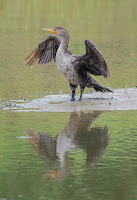






Comments
Post a Comment